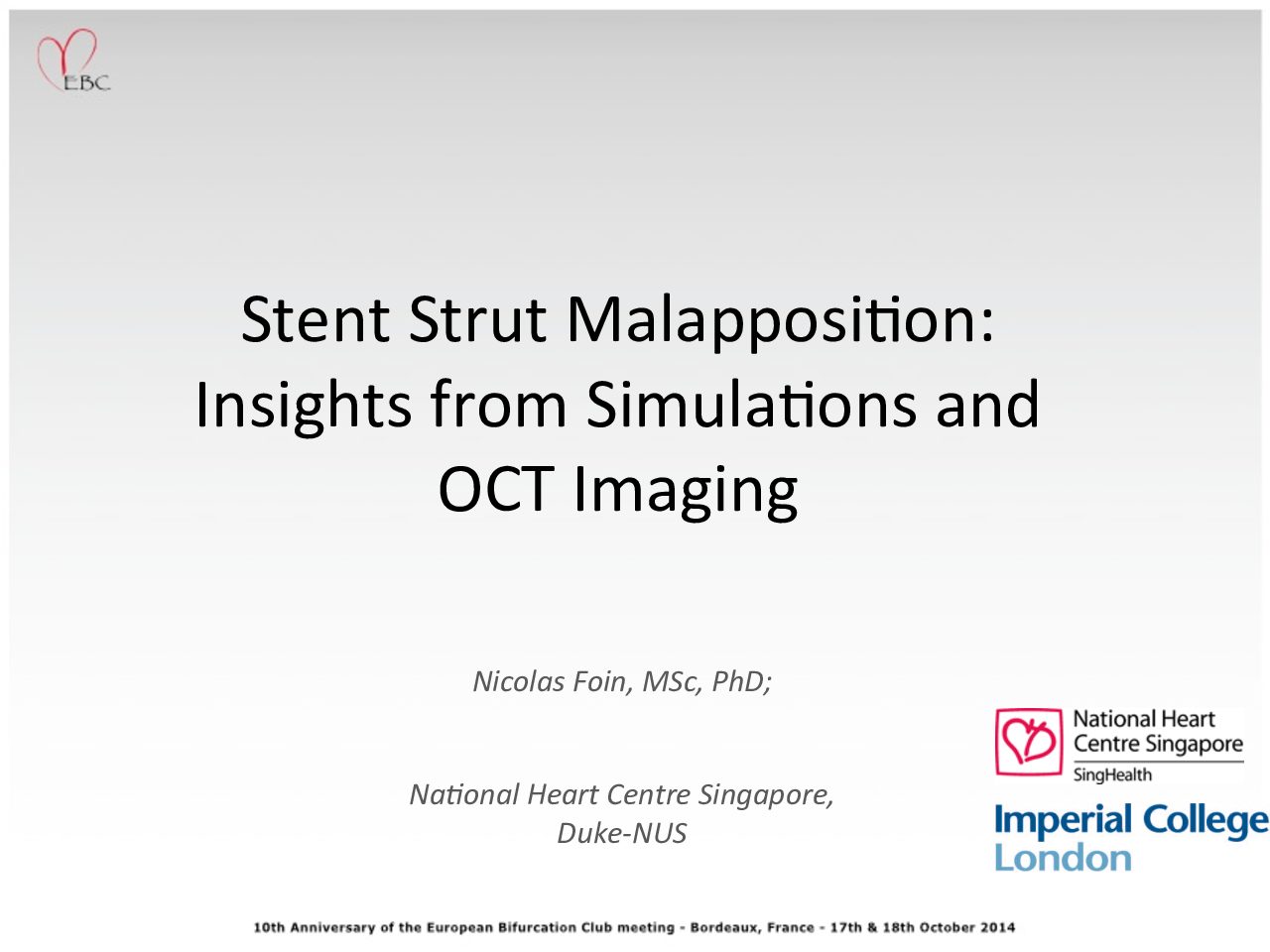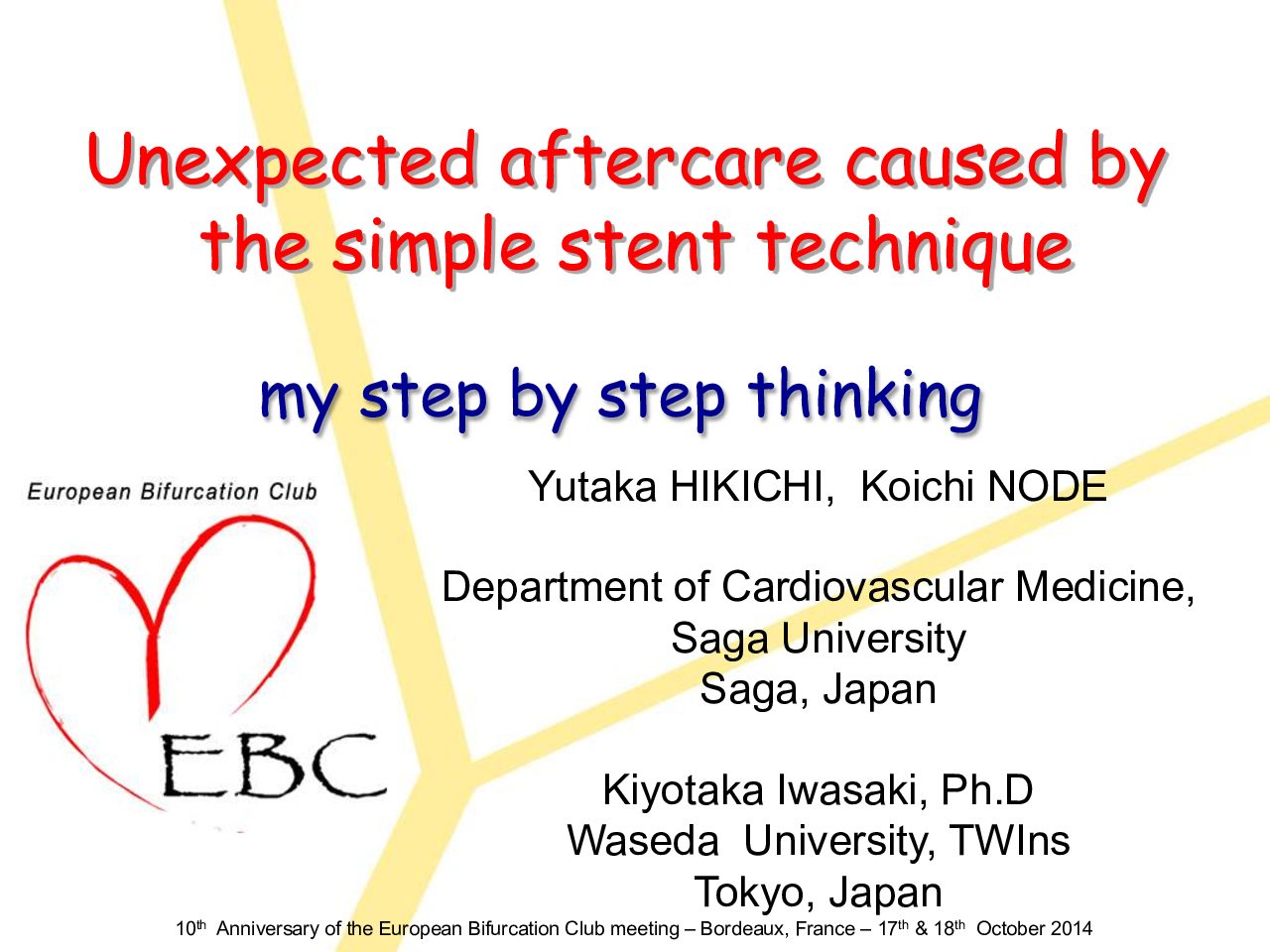Side Branch Evaluation by OCT
European Bifurcation Club 2014, EBC 2014 - Bordeaux, France LIVE BIFURCATION STENTING GUIDANCE: OCT, IVUS, FFR & ANGIO Side Branch Evaluation by OCT Author: Niels Ramsing Holm, MD, Aarhus University Hospital, Denmark CONCLUSION Do not advance an imaging wire into a jailed SB Observe imaging depth evaluating SBs by MV 3D-OCT SB pullback for full evaluation of two-stent techniques Adjustable 2D measurement planes may be new standard in ostial assessment Do not advance an imaging wire into a jailed SB Observe imaging depth evaluating SBs by MV 3D-OCT SB pullback for full evaluation of two-stent techniques Adjustable 2D measurement planes may be new standard in ostial assessment










